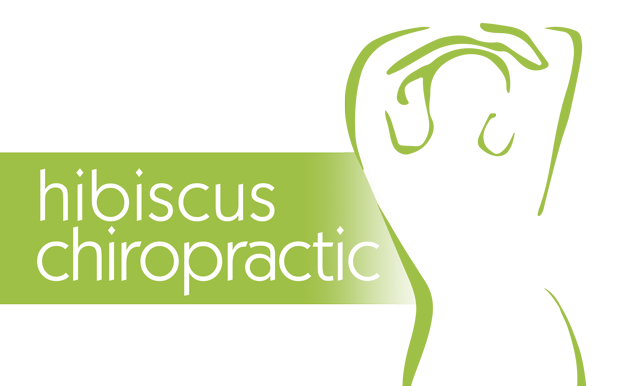Many people believe they’re in good health as long as they don’t feel pain. Unfortunately, this common misconception can lead to the worsening of health problems, especially when it comes to your spine.
Your spine is more than just the structure that holds you upright—it’s the main highway for your nervous system, connecting your brain to the rest of your body. When the spine is misaligned or affected by physical, chemical, or emotional stress, the health of your entire body can be impacted. Yet, spinal degeneration doesn’t always announce itself with immediate pain. In fact, pain is often the last signal your body gives to indicate a deeper issue.
When symptoms like pain or discomfort appear, significant spinal deterioration may have already occurred. This slow and often silent process can be broken down into stages:
Early Dysfunction (Phase 1):
There may be little to no symptoms in the early phase of spinal deterioration. The spine starts to lose its normal alignment and mobility due to poor posture, stress, or minor injuries. This can affect the nervous system, but you might not feel pain immediately because your body is incredibly adaptable. However, changes are happening under the surface—your body compensates for the misalignment, which sets the stage for further deterioration.
Moderate Deterioration (Phase 2):
Spinal wear and tear become more noticeable to you and your body during this stage. You may experience discomfort, stiffness, or mild pain, especially after specific activities. X-rays or chiropractic evaluations may show the beginning of bone spurs or early signs of spinal degeneration. However, many people still shrug off these symptoms as minor annoyances and continue without seeking care. Unfortunately, this is the stage where the damage is becoming more permanent.
Advanced Deterioration (Phase 3):
By reaching this stage, the damage to the spine and surrounding structures is significant. The pain is more frequent, and daily activities may become increasingly difficult. Many patients seek out help at this point, but by this time, the body has already adapted to years of spinal misalignment. Chiropractic care can still help at this point, but the goal will often be managing pain and preventing further damage rather than fully restoring spinal health.
Why Symptoms Are Late to Appear?
Our bodies are amazing at compensating for imbalances—until they can’t anymore. For months or even years, your body may be adapting to spinal misalignments, masking the damage that’s accumulating beneath the surface. By the time pain or restricted movement occurs, significant wear and tear may have already affected your spine, joints, and surrounding tissues.
Consider the analogy of a cavity in your tooth. You don’t usually feel pain in your tooth until the cavity becomes large and potentially reaches a nerve. Similarly, spinal deterioration progresses quietly until it reaches a point where symptoms like pain, stiffness, or tingling begin to appear. But just because you’re not feeling pain doesn’t mean there isn’t an issue.
Many people only visit a chiropractor when they’re already experiencing pain, but by that time, their spinal health may have already significantly deteriorated.
I am already feeling pain and other symptoms. Can chiropractic still help me?
The good news is YES. While Chiropractic is best used as a preventative measure to catch and address spinal issues early, it could also be used as corrective care to manage pain and restore your spinal alignment and function in your body. We have highlighted several studies that show how spinal manipulation can be beneficial for patients already suffering from spinal degenerative conditions:
A 2014 randomized controlled trial published in the Archives of Physical Medicine and Rehabilitation (1) evaluated the short-term effects of high-velocity, low-amplitude (HVLA) spinal manipulation (SM) on men with degenerative lumbar disc disease at L5-S1. The study found that a single spinal manipulation significantly improved pain perception, spinal mobility, hip flexibility, and full height recovery compared to a placebo intervention. These improvements were observed immediately after the treatment. The results suggest that chiropractic spinal manipulation may provide immediate relief and functional improvements for individuals with lumbar degenerative disc disease.
Another 2021 study in Physical Therapy Rehabilitation Science evaluated the immediate effects of flexion-distraction spinal manipulation in patients with lumbar degenerative disc disease (2). The randomized controlled trial found that the manipulation significantly improved intervertebral height, decreased lower back pain, and increased spinal mobility compared to a control group. Pain levels were reduced by approximately 20 mm on the visual analog scale, while mobility tests such as the finger-to-floor and passive straight leg raise also showed marked improvements. This research supports the use of flexion-distraction spinal manipulation as a short-term therapeutic option for patients suffering from lumbar degenerative conditions.
Final Thoughts
By the time you start feeling symptoms, spinal deterioration may have already taken hold. So don’t wait for pain to tell you something is wrong. At Hibiscus Chiropractic, we believe in proactive care and prevention. Our experienced chiropractors are here to help you maintain optimal spinal health and prevent future problems before they arise. Whether you’re currently experiencing discomfort or want to safeguard your long-term health, now is the perfect time to schedule a consultation.
Contact us today at Hibiscus Chiropractic for a thorough spinal evaluation and start your journey to better health!
Sources:
1. Felipe P, Angel V., Cleofás Rodriguez B. et al. Short-term effect of spinal manipulation on pain perception, spinal mobility, and full height recovery in male subjects with degenerative disk disease: a randomized controlled trial. Arch Phys Med Rehabil. 2014 Sep;95(9):1613-9. doi: 10.1016/j.apmr.2014.05.002. 2. Taejin Pi, Yijung Chung. Immediate Effect of Flexion-Distraction Spinal Manipulation on Intervertebral Height, Pain, and Spine Mobility in Patients with Lumbar Degenerative Disc Disease. Physical Therapy Rehabilitation Science 2021;10:235-43.

